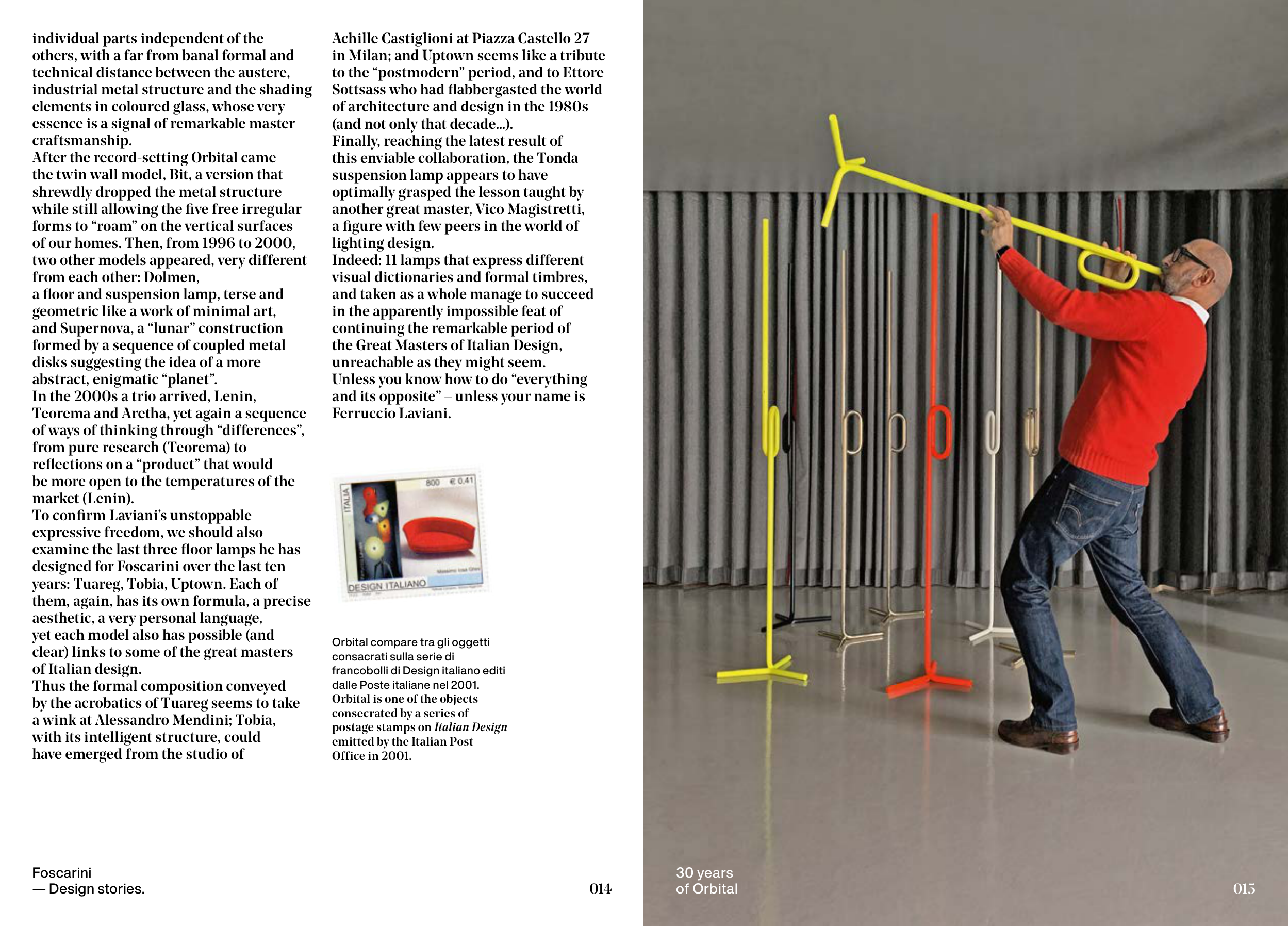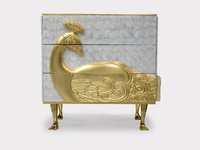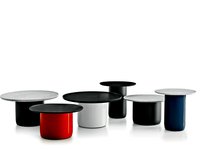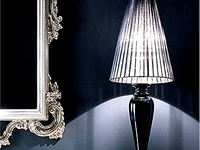014
Foscarini
— Design stories.
individual parts independent of the
others, with a far from banal formal and
technical distance between the austere,
industrial metal structure and the shading
elements in coloured glass, whose very
essence is a signal of remarkable master
craftsmanship.
After the record-setting Orbital came
the twin wall model, Bit, a version that
shrewdly dropped the metal structure
while still allowing the five free irregular
forms to “roam” on the vertical surfaces
of our homes. Then, from 1996 to 2000,
two other models appeared, very different
from each other: Dolmen,
a floor and suspension lamp, terse and
geometric like a work of minimal art,
and Supernova, a “lunar” construction
formed by a sequence of coupled metal
disks suggesting the idea of a more
abstract, enigmatic “planet”.
In the 2000s a trio arrived, Lenin,
Teorema and Aretha, yet again a sequence
of ways of thinking through “differences”,
from pure research (Teorema) to
reflections on a “product” that would
be more open to the temperatures of the
market (Lenin).
To confirm Laviani’s unstoppable
expressive freedom, we should also
examine the last three floor lamps he has
designed for Foscarini over the last ten
years: Tuareg, Tobia, Uptown. Each of
them, again, has its own formula, a precise
aesthetic, a very personal language,
yet each model also has possible (and
clear) links to some of the great masters
of Italian design.
Thus the formal composition conveyed
by the acrobatics of Tuareg seems to take
a wink at Alessandro Mendini; Tobia,
with its intelligent structure, could
have emerged from the studio of
Achille Castiglioni at Piazza Castello 27
in Milan; and Uptown seems like a tribute
to the “postmodern” period, and to Ettore
Sottsass who had flabbergasted the world
of architecture and design in the 1980s
(and not only that decade…).
Finally, reaching the latest result of
this enviable collaboration, the Tonda
suspension lamp appears to have
optimally grasped the lesson taught by
another great master, Vico Magistretti,
a figure with few peers in the world of
lighting design.
Indeed: 11 lamps that express different
visual dictionaries and formal timbres,
and taken as a whole manage to succeed
in the apparently impossible feat of
continuing the remarkable period of
the Great Masters of Italian Design,
unreachable as they might seem.
Unless you know how to do “everything
and its opposite” – unless your name is
Ferruccio Laviani.
Orbital compare tra gli oggetti
consacrati sulla serie di
francobolli di Design italiano editi
dalle Poste italiane nel 2001.
Orbital is one of the objects
consecrated by a series of
postage stamps on Italian Design
emitted by the Italian Post
Office in 2001.
015
30 years
of Orbital







